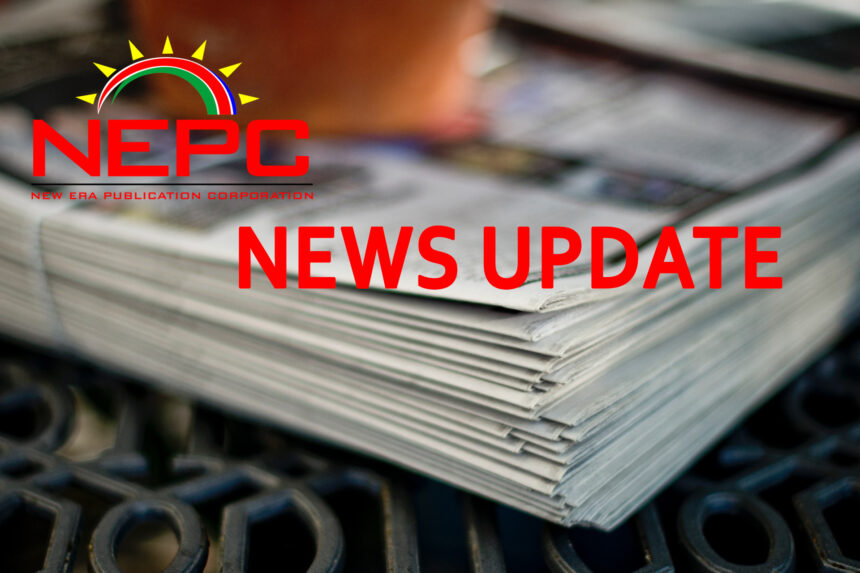Heskiel Edward
If you’ve recently noticed an increase in cable-laying activities around your neighbourhood in Namibia, you’re not alone. These cables are part of a significant infrastructure project aimed at enhancing the country’s internet connectivity through fibre optic technology.
This initiative is spearheaded by several Namibian Internet Service Providers (ISPs) including Paratus, Telecom Namibia, MTC, and RocketNet, among others.
Fibre optic cables are being installed across various Namibian towns and cities to provide high-speed internet access. Much like how power companies lay down power lines and install transformers that homes connect to for electricity, these fibre-optic cables are the backbone of modern digital infrastructure. The cables run along streets and terminate in manholes or junction boxes. When a resident or business applies for a fibre connection, they are connected to these junctions, much like connecting to an electrical transformer.
For instance, MTC has deployed 475 kilometres of fibre-optic backbone cabling in several areas of Windhoek, including Pionierspark, Dorado Park, and Kleine Kuppe, as well as coastal areas like Langstrand. This project is part of an investment aimed at reducing network congestion and improving connectivity. Similarly, Paratus, in collaboration with Telecom Namibia, worked on landing the Equiano subsea cable, which will significantly boost Namibia’s internet capacity and redundancy.
Superior
Fibre optic technology offers numerous advantages over traditional WiFi connections. Firstly, fibre provides much higher bandwidth, allowing for faster internet speeds. This means smoother streaming, quicker downloads, and more reliable online activities. Secondly, fibre-optic cables are less susceptible to interference and signal loss compared to WiFi, which can be affected by physical obstacles and electromagnetic interference. This leads to more stable and consistent internet connections.
Furthermore, fibre optics are crucial for the future of connectivity. As more devices become internet-dependent, the demand for reliable, high-speed connections increases. Fibre optics are well-suited to meet these demands, ensuring that as technology evolves, Namibia’s digital infrastructure can support it.
Impact on Namibian towns
The ongoing fibre projects in Namibia are not just about enhancing current internet speeds but are also about future-proofing the country’s digital landscape. With improved internet connectivity, local businesses can operate more efficiently, residents can enjoy better access to information and entertainment, and educational institutions can provide enhanced digital learning opportunities.
Namibian ISPs are making significant strides to connect more homes and businesses to this robust network. By laying these cables now, they are paving the way for a more connected and technologically advanced Namibia, capable of competing on a global scale in the digital age.
Get connected
As these fibre optic projects progress, here are some compelling reasons to look forward to and consider applying for a fibre connection in your home:
Unmatched speed: Fibre optics offer internet speeds that are exponentially faster than traditional DSL or cable connections. This is ideal for households with multiple users or those who use high-bandwidth applications like streaming, gaming, and video conferencing.
Reliable and stable connections: Fibre-optic internet is less prone to interruptions and provides a more stable connection, which means fewer dropped connections and buffering issues.
Future-proofing your home: As smart home devices become more prevalent, having a robust and fast internet connection will be crucial. Fibre optics ensure your home is ready for future technological advancements.
Enhanced work-from-home: With more people working remotely, having a reliable internet connection is essential for productivity and effective communication.
Increased property value: Homes equipped with high-speed fibre optic internet are often more attractive to buyers, potentially increasing your property’s value.
Benefits: High-speed internet can facilitate online learning and remote working opportunities, opening up new avenues for education and employment.
The fibre-optic cables being laid in Namibian neighbourhoods represent a major leap forward in the country’s digital infrastructure. These initiatives by internet service providers will not only improve internet speeds and reliability but also ensure that Namibia is well-prepared for the future demands of digital connectivity. So, the next time you see those cables being laid around your street, you can look forward to a faster, more reliable internet connection in the near future. Don’t miss out on the opportunity to upgrade your home’s connectivity—consider applying for a fibre connection today and join the digital revolution.
*Heskiel Edward specialises in IT systems administration and business systems analysis.
: heskiel.edward@gmail.com


